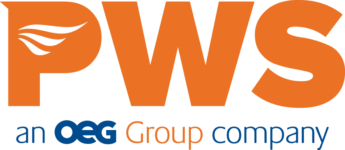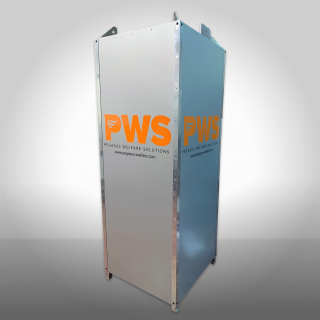• The world’s first in-turbine toilet revolutionises offshore hygiene for just 50p a day
• Six fewer daily CTV ladder climbs boost safety and productivity
• A greater diversity of people will be attracted to the offshore workforce now that facilities can accommodate a wider range of needs
• First toilet to be installed at the Offshore Renewable Energy (ORE) Catapult’s 7MW Levenmouth Demonstration Turbine
• Toilets on turbines no longer an “optional extra nice to have.”
• Enables compliance with regulations and industry guidelines
The world’s first in-turbine toilet is launched today designed by a former offshore engineer who says it must become industry standard.
Dan Greeves, founder of Pegasus Welfare Solutions (PWS), secured a worldwide patent for the standalone unit within an offshore turbine tower to solve the ‘elephant in the room’ issue.
“Currently there is no option available for toilet facilities on either onshore or offshore wind turbines for technicians,” he said.
The first retro-fit toilet unit costs just 50p a day for a turbine’s 20-year lifetime.
“For the price of a pint of milk a day, this is a solution that improves safety, productivity and will encourage more women to work in offshore wind.” Dan said.
“Just by having a toilet in a turbine means an average of six fewer ladder climbs and transfers to crew transfer or service operation vessels, which, while improving safety can increase productivity by an average of about 18%.”
PWS’ simple innovation addresses a major offshore wind issue – how to build a larger female workforce. Lack of offshore toilets is frequently cited as a reason why women don’t pursue offshore careers.
Offshore Wind Sector Deal targets seek to double the number of women in the industry from 16% to 33% in the next 10 years.
“It’s a solution to a very real yet simple problem,” said Dan.
“Driving down costs in offshore wind has made toilets on turbines a ‘nice to have’ rather than a ‘need to have.’ Our solution has made it affordable and comes with benefits.”
Dan worked with the Offshore Renewable Energy (ORE) Catapult on the unit’s design at its 7MW Levenmouth Demonstration Turbine to achieve the perfect in-tower fit. The unit’s first installation is expected to be at Levenmouth
“Key was making it fit into a turbine tower by the door without obstructing any exits, restricting access, whilst ensuring it functions without external power or water.”
Lorna Bennet, project engineer at ORE Catapult, praised the unit as an “invention that has taken remarkable engineering ingenuity.”
“Minimising human presence offshore is a strategic priority for the industry, but it cannot be avoided entirely. This means that innovations in safety and welfare remain a priority, particularly as offshore turbines are growing in number and size, pushing ever further offshore.
“Crew transfer to and from a vessel over rolling waves can be unpleasant at any time, even more so when you need to use a toilet and each transfer increases the risks associated with working offshore. This first installation of the Pegasus Welfare unit at our Levenmouth Demonstration Turbine heralds a welcome improvement in offshore working.”
Dan, who worked offshore for more than 10 years, said:
“The government wants every home to be powered by offshore wind by 2030, My ambition is for every turbine to have an in-tower toilet. Its benefits make it a compelling offer.”
“No one has come up with the technology before. Our unit comes with its own water and power supply and take no resources from the turbine. Waste is secured in a sealed cassette that a technician fits at the start of the shift and removes at the end and takes it away to be cleaned.”
With nearly 3000 offshore wind turbines in the UK and a long pipeline of development ahead, there was a clear industry need for the industry to deliver welfare requirements specified in RAMS (Risks and Method Statement) to improve day-to-day operations during construction, commissioning and operations and maintenance (O&M)”, he said
To retrofit, the unit arrives at the installed turbine by CTV and is lifted on to the transition piece by davit crane where it can be installed by two people.
Each unit comes with full sanitary dispenser and disposal and can be maintained in-house or by a service contract with PWS, based in Lenwade, Norfolk.
“A dream scenario is that when an offshore wind farm buys its turbines, we speak to the project director, procurement team and turbine manufacturer and arrange for the units to be installed at commissioning stage.”
One technician manager said the news was “well overdue.”
“Officially technicians should call the CTV or use the installation vessel or SOV, but to save time bottles are used or, to be blunt, they go over the side. I have had many complaints about bags of not very pleasant waste being left in turbines in the past during installation phases.”
Celia Anderson, Offshore Wind Sector Deal, People & Skills Director, said:
“The industry has committed to improve the diversity of its workforce. Improving facilities in turbines may well contribute to addressing the gender imbalance and improving ethnic diversity of people working offshore.
“The industry’s newly-published best practice guide – ‘Diversity and Inclusion: Focusing on Gender and Ethnicity in the Offshore Wind Sector – was highlighted by Kwasi Kwarteng in his keynote speech at Global Offshore Wind on 30 October 2020.”
Mandy Masters, business development manager of Windcat Workboats, said:
“It is about welfare regulations. Why should it be different offshore to onshore? You could never get away with not having these facilities onshore. It is so important for both women, but also for men to have equivalent facilities offshore.”
Dan has already had interest from overseas, with Taiwan and the US as key target markets?
The in-turbine tower toilet is a permanent development of the original PWS modular toilet that Dan invented for offshore substations and can be craned on to turbine transition pieces.
He has built a PWS rental fleet of 42 modular toilets built within a patented lightweight marine-grade aluminium frame.
These units are on substations Triton Knoll, Moray East, East Anglia One and other offshore wind farms with another 10 currently being manufactured in Norwich.
Dan said:
“These are a more temporary solution while I developed the permanent solution of an in-tower fitted unit. They worked well and there was clearly a market, so I pushed ahead with the in-tower version.”
During lockdown, he also sold eight hot hand wash units earlier this year to RWE to allow construction and continue operations contributing the steps being taken to provide Covid-safe workspace.

